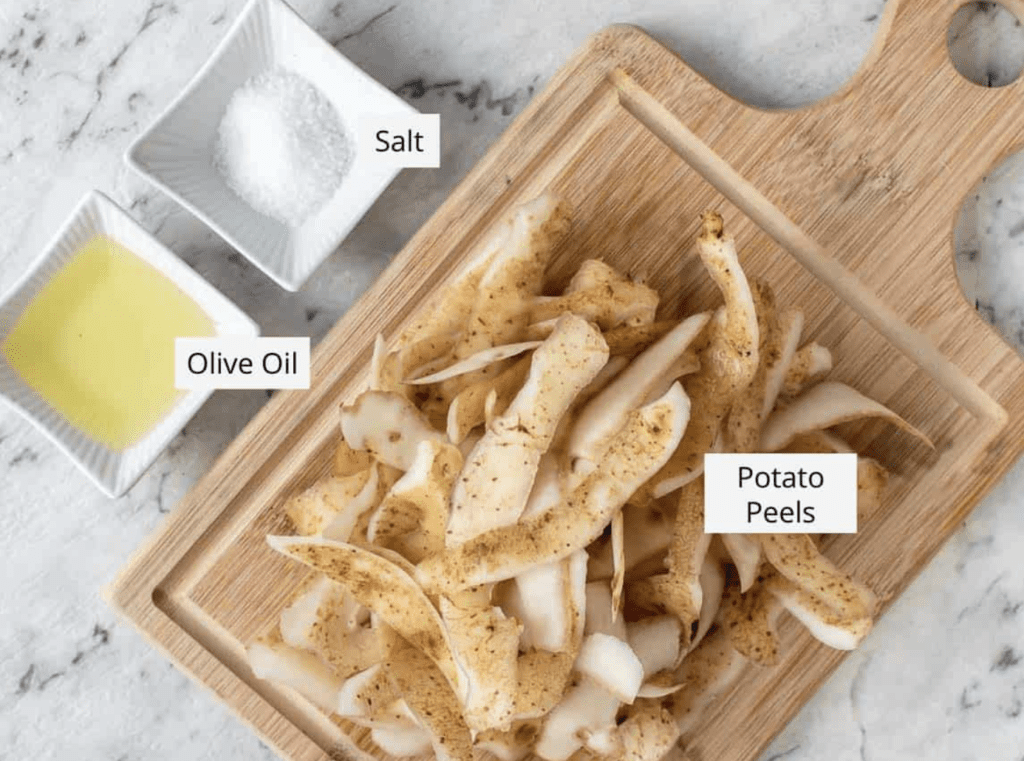
How to Transform Your Kitchen into a Zero-Waste Haven
Share
Growing up in kitchens where dehydrated foods and pickles were very popular, I realised that foods become much tastier and healthier depending on the way they are stored. So I was no stranger to the idea of a zero-waste kitchen, although at that time we did not have a name for it, and clearly, I still had lots to learn about it.

As a child I loved to help my auntie set her ripe tomatoes and red peppers in the summer Andalusian sun to dry, looking forward to enjoying their intense flavour in the winter. Also, my parents, at 75 and 80, still rescue end-of-season fruits every year to make their delicious jams and pickles. So, obviously, I have been strongly influenced by many of our Mediterranean traditions when it comes to preserving food.
The Covid-19 times gave us an opportunity to transition to a zero-waste lifestyle as many of us were spending more time at home and in the kitchen. Whether you're a seasoned eco-warrior or just starting on your journey towards sustainability, the idea of a zero-waste kitchen can seem like a daunting task. But with a few simple tips and tricks, you can greatly impact the environment while enjoying tasty and healthy meals, you will feel proud of.
What Is a Zero-Waste Kitchen, and Is It Practical for Modern Homes?
So what exactly is a zero-waste kitchen? Simply put, it is a kitchen that aims to produce as little, if any, waste as possible. This can involve a variety of methods, such as reducing organic waste by composting food scraps, but it is not the only one. It also involves reducing the usage of precious resources by switching to reusable containers and bags, and buying in bulk to avoid excess packaging.
A zero-waste kitchen is not only good for the environment, but it can also be good for your household budget. You can save money in the long run by reducing waste and the need for disposable items. Plus, by cutting down on the amount of waste you produce, you're also helping to reduce your environmental impact.
Don't worry if you don't know where to start because I am going to share some tips below. You can begin by making small changes, such as using cloth napkins instead of paper or bringing your own reusable bags to the grocery store. Over time, these small changes can add up to make a big impact.
"Zero waste is a journey that begins with a single step, and the kitchen is the perfect place to start" - Bea Johnson, author of "Zero Waste Home
First Steps To A Zero Waste Kitchen
To get started, simply take a peek at what you're tossing in your kitchen trash.
Are you using a ton of plastic wrap, aluminum foil, or paper towels? If you find yourself using lots of one-way materials, you may want to consider switching to reusable options like cloth towels or beeswax wraps. Durable containers and re-purposed glass jars are also great alternatives to keep your leftovers, bulk items, or homemade snacks, without creating waste.
Also, have you considered how much food are you throwing away? In Europe, we are wasting 1/3 of the food that we produce. That is 57 million tons of food waste every year, valued at 130 billion euros!! Those numbers are also food for thought (pun intended).
If food waste is an issue in your kitchen, it might be a question of critically reviewing your grocery shopping and cooking habits. You may be buying too much or just need to implement some easy planning tools like a weekly menu to reduce what goes in the bin.
I know that with our busy lifestyles, it is not always easy to take the time, but in this case, also your budget will be grateful if you do.
After you've got those down, there are loads of other little things you can do to reduce waste in your kitchen.
For starters, buying in bulk cuts down on packaging waste. If there is not a bulk shop near you, try to choose products in recyclable or compostable packaging and bring your own reusable bags to the grocery store.
If you like DIYs, you can even try to make your own fruit and vegetable carrier bags, it takes only 5 minutes! Check the video here.
Some supermarkets even allow bringing your own containers to carry foods like cheese, olives, etc.
Plus, if you want to reduce chemicals and toxic products in your kitchen, try making your own cleaning products with things like vinegar and baking soda, is super easy and cheap.
By making these small changes, you'll be well on your way to creating a zero-waste kitchen that's good for the planet and your wallet!

From "Waste To Wow" With Composting
Even if we are really good at avoiding throwing food, cooking always generates organic waste. An easy way to turn your food scraps into something useful is by composting them. It's not as complicated as it sounds, I promise!
- Get a compost bin or container: The size of your composter will of course depend on how much space you have available. It can go from a small bin that sits on your kitchen top or a bigger bin on your terrace or garden. There are some that you can bury in your veggie patch to deliver the compost goodness right where it is needed. You can either buy one, repurpose an old canister or make one yourself using materials like wooden pallets.
- Collect food scraps: Start collecting food scraps like fruit peels, veggie scraps, coffee grounds, and eggshells. Avoid adding any meat, dairy, or oily foods since they can attract pests and slow down the composting process.
- Layer your compost bin: Layer your food scraps with some leaves or grass clippings in your compost bin.
- Monitor and maintain: Keep your compost bin moist and turn it over every week or so to ensure that everything breaks down evenly.
- Wait for compost: Over time, everything will break down and turn into awesome soil that you can use for your plants or garden.
And hey, good news is that you can also compost if you live in an apartment! You can get a small bin for indoor composting. It's a great way to reduce waste and give back to the earth.
Tips for Safe and Long-Lasting Preserved Food For a Zero-Waste Kitchen
Preserving food is not only a great way to reduce food waste, but it's also an excellent strategy for building a sustainable, zero-waste kitchen. By preserving food, you can make the most out of your groceries and reduce your reliance on single-use packaging and plastic containers.
For example, pickling vegetables and fruits can help reduce food waste by using up excess produce before it goes bad. You can pickle cucumbers or carrots with vinegar and spices to create a tasty snack or condiment that can last for months in the fridge.
If you need some equipment to get started, check out this canning beginner's kit. Of course, there are canning advance sets that include anything that you may wish for.

Safety first!
But when it comes to canned products, I would like to warn you about a few things. If you want to make sure the food you preserve is safe to eat, it's crucial to follow the right techniques.
For instance, when canning food, make sure to use clean jars and undamaged lids. You should boil them for the recommended time to sterilize them. The preserves should be cooked in a double-boiler water bath as well. Skipping these steps could lead to the growth of harmful bacteria that can make you sick.
It's also important to store preserved food in a cool, dry place away from sunlight to prevent it from going bad.
Lastly, before eating any preserved food, check it for any signs of spoilage, like mold or bad smell. By following these simple tips, you can keep your preserved food safe to eat and enjoy it for a long time.

Similarly, dehydrating fruits and vegetables can extend their shelf life. It will allow you to enjoy them for longer without the need for plastic packaging. It is also a great way to preserve them for later use in smoothies, trail mixes, or even as a crunchy snack.
If you have herbs or greens that are about to wilt, consider freezing them in ice cube trays with water or olive oil. They will be great to add flavour to soups or stews later on.
Don't forget about using up leftovers!
Leftovers can be transformed into delicious meals with just a little creativity and planning. For example,
- Leftover vegetables can be used to make vegetable soup.
- Leftover chicken or beef can be added to stir-fried dishes or tacos, to make sandwiches or croquettes.
- You can also transform stale bread into croutons or breadcrumbs.
- Make a frittata with leftover veggies and eggs.
- Use overripe fruit to make a tasty smoothie, sweeten up your muesli, or bake a delicious cake
By utilizing leftovers, you can save money and reduce the amount of food that ends up in the trash. Plus, you'll be amazed at how delicious and flavorful your meals can be with a little bit of imagination! Here is an example of what you can do:
Zero Waste Recipe: POTATO SKIN CHIPS 🥔🍟🔄

If you're looking for a way to reduce food waste in your kitchen, look no further than potato skins. Often discarded as scraps, potato skins are not only edible but also delicious. They're also packed with fiber, vitamins, and minerals, making them a healthy addition to your diet. And what better way to enjoy them than as crispy, salty fries?
- Firstly, preheat the oven to 400ºF/200ºC and line a large baking sheet with non-stick baking paper. Wash the potato skins to remove excess starch.
- Drain the potato skins and dry them with paper towels. Take care to dry the skins very well so that you can have really crispy potato skin chips.
- In a bowl, mix potato skins with oil and salt. You can use clean hands to combine and ensure that each skin is coated in oil and salt.
- Spread out evenly onto the prepared baking sheet.
- Roast for 10 minutes, stir, then roast for 5 - 10 minutes until crispy and golden brown.
Zero Waste Recipe: MASHED POTATO WAFFLES
Easy enough! isn't it? if you are feeling inspired, check this other easy recipe to use up your leftover mashed potatoes
To sum it up, turning your kitchen into a zero-waste haven requires some effort and getting used to, but it's totally worth it for the environment, your health, and your wallet. Just follow the tips and strategies in this article, and you'll be able to significantly reduce your household waste and carbon footprint.
Don't forget to reduce, reuse, and recycle whenever you can, compost food scraps, and avoid single-use plastics. And it's important to support small businesses and buy local, organic products if you can. By doing so, you're helping the local economy and promoting sustainable agriculture practices while reducing the environmental impact of transportation.
So let's all take small steps towards a zero-waste kitchen and make a positive impact on our planet!

Lola is the founder of Green Cloud Nine. Nature lover and environmental activist since she was a teenager, Lola has always been a great fan of homesteading and she is continuously experimenting and finding her way to be more self-sufficient and sustainable.




